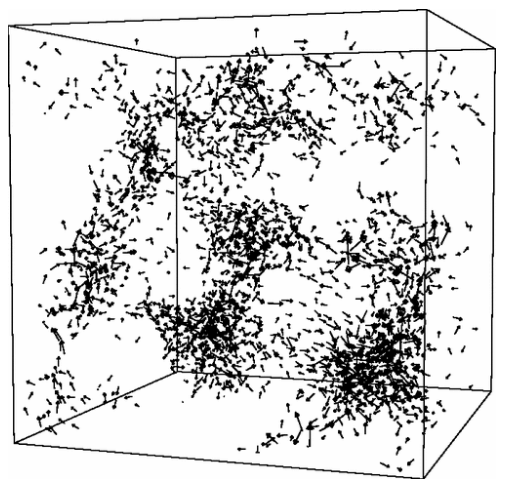Abstract
We examine the plastic deformation of a model polymeric glass under tension. Local plastic events are found at extremely small strains, well below the yielding point, in a regime where the material is traditionally described as perfectly elastic. A distinct relationship is identified between these irreversible displacements (plastic events), the amplitude of segmental motion, local structure, and local elastic moduli. By examining the motion during the deformation of individual sites, we arrive at a mechanistic explanation for how these events arise. It is shown that, upon deformation, polymer sites that exhibit relatively small but positive elastic moduli are prone to failure. Such sites are also found to exhibit a large vibration amplitude, as indicated by their respective Debye-Waller factors. Sites that fail first tend to have a higher degree of nonsphericity than the rest of the material. We also find the collective occurrence of local plastic events where percolation or concerted action leads to global failure of the material above a certain strain.
